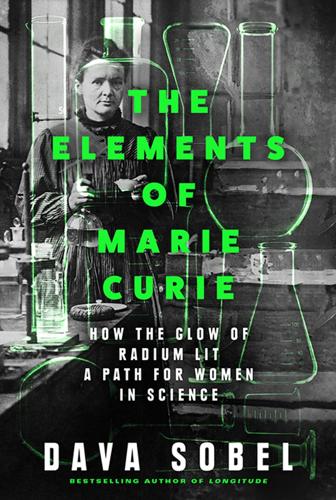
The Elements of Marie Curie
by
Dava Sobel
Published 20 Aug 2024
“I learned to my cost that progress in such matters is neither rapid nor easy,” she later reflected. Even so, “I developed my taste for experimental research during these first trials.” MANYA’S ACCOMMODATING COUSIN, Józef Boguski, had studied chemistry in his youth at the University of St. Petersburg with Dmitri Mendeleev, creator of the periodic table of the elements. This remarkable chart summarized everything known about the building blocks of the material world. At a glance it showed which elements shared common properties, which ones were most likely to combine with which others, and in what proportions.
…
Rather than elevate base metals to the rank of treasure, the natural, spontaneous transmutations of radioactivity wrought disintegration and decay. From all indications, the silvery shimmer of uranium, the luster of thorium—even the luminous blue aura of radium—would eventually turn to lead. In the spaces between uranium and lead on the periodic table, an undeniable instability prevailed. These disclosures disturbed Dmitri Mendeleev. In formulating his periodic system, Mendeleev had presumed true elements to be immutable. Moreover, he viewed the atom as an indivisible entity with no component parts. Each element, he believed, consisted of its own characteristically shaped atoms of a particular atomic weight, all identical to one another and different from the atoms of every other element.
…
ACJC) Bertram Boltwood, radiochemist at Yale History and Art Collection / Alamy Stock Photo Henri Becquerel, 1903 Nobelist in physics (with the Curies) Smithsonian Libraries and Archives Émile Armet de Lisle, founder of Sels de Radium Musée Curie (coll. ACJC) Dr. and Mme. Eugène Curie with their two sons, Pierre (at right) and Jacques. Musée Curie (coll. ACJC) Frederick Soddy, 1921 Nobelist in chemistry Wikimedia Commons Dmitri Mendeleev, creator of the periodic table Wikimedia Commons The marketers of Tho-Radia cosmetics promised youthful beauty from radioelements—a spurious claim backed by the fictitious authority of “Dr. Alfred Curie.” Courtesy of the National Museum of Nuclear Science & History This 1917 class of “manipulatrices,” or X-ray operators, took instruction at the Radium Institute from Marthe Klein, Irène Curie, and Suzanne Veil (seated third, fourth, and fifth from left).
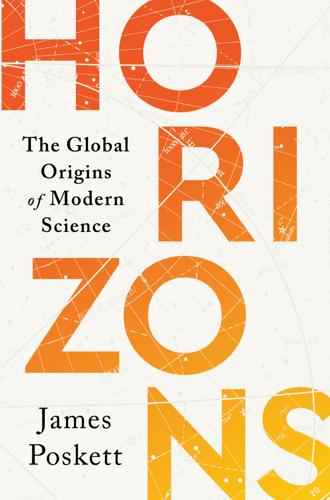
Horizons: The Global Origins of Modern Science
by
James Poskett
Published 22 Mar 2022
Recent breakthroughs in physics also helped, as scientists realized that an electric current could be used to separate out different chemical elements. But perhaps the most important breakthrough was the invention of the periodic table, in which all the chemical elements were ordered by atomic weight, beginning with the lightest element, hydrogen. First proposed by the Russian chemist Dmitri Mendeleev in 1869, the periodic table predicted the existence of many as-yet-unknown elements, as there were gaps waiting to be filled in, thus kickstarting a race to find them. There was a certain amount of national rivalry here. Scientists often chose to name new elements after the country of their birth.
…
Throughout the second half of the nineteenth century, Russian chemists were employed by the government to advise on everything from the manufacture of gunpowder to the distillation of vodka. At this time, Germany was widely recognized as the leading nation when it came to industrial chemistry. With this in mind, the Russian government sponsored hundreds of young scientists to train at German universities. Amongst these was Dmitri Mendeleev, perhaps the most famous Russian chemist of the era, who was sent to study at Heidelberg University in 1859. When Mendeleev returned to Russia in 1861, he took up a position at Saint Petersburg University, where he helped to modernize the chemistry course, introducing much more practical teaching in an expanded laboratory modelled on what he had seen in Germany.
…
‘It opens the way to the exploitation of natural resources and the creation of new substances.’ Ultimately, in order to understand Mendeleev’s contribution to the development of modern chemistry, we need to move beyond the periodic table. Instead, we need to return to the world of industry and war that characterized nineteenth-century science.21 Dmitri Mendeleev raised his arm, giving the order to prepare the artillery. As he did so, a Russian naval officer loaded a shell into a nearby cannon. Mendeleev then lowered his arm, calling out ‘Fire!’ A split second later, the naval officer pulled a cord, firing the shell across an open field. Mendeleev watched as the shell exploded in the distance.

Why We Sleep: Unlocking the Power of Sleep and Dreams
by
Matthew Walker
Published 2 Oct 2017
From this dreaming process, which I would describe as ideasthesia, have come some of the most revolutionary leaps forward in human progress. There is perhaps no better illustration highlighting the smarts of REM-sleep dreaming than the elegant solution to everything we know of, and how it fits together. I am not trying to be obtuse. Rather, I am describing the dream of Dmitri Mendeleev on February 17, 1869, which led to the periodic table of elements: the sublime ordering of all known constituent building blocks of nature. Mendeleev, a Russian chemist of renowned ingenuity, had an obsession. He felt there might be an organizational logic to the known elements in the universe, euphemistically described by some as the search for God’s abacus.
…
Using that wide-angle dream lens, we can apprehend the full constellation of stored information and their diverse combinatorial possibilities, all in creative servitude. MEMORY MELDING IN THE FURNACE OF DREAMS Overlay these two experimental findings onto the dream-inspired-problem-solving claims, such as those of Dmitri Mendeleev, and two clear, scientifically testable hypotheses emerge. First, if we feed a waking brain with the individual ingredients of a problem, novel connections and problem solutions should preferentially—if not exclusively—emerge after time spent in the REM dreaming state, relative to an equivalent amount of deliberative time spent awake.

Elemental: How the Periodic Table Can Now Explain Everything
by
Tim James
Published 26 Mar 2019
It’s useful to have that approach because, although Newlands’s octave hypothesis was wrong, his idea of periodic repetition turned out to be on the money. Elements do obey a cyclic pattern but a much more complicated one than he had assumed. He was, for this realization, awarded the Davy Medal for Chemistry by the Royal Society in 1887. THE DREAMER Dmitri Mendeleev was born in Siberia in 1834, the youngest of probably thirteen children (historians can’t agree on the number, but I’m sure his parents knew). When his father went blind, Dmitri supported the family financially by tutoring science and, according to those who saw him in action, he was a fantastic communicator, full of passion and enthusiasm for both the subject and the art of explanation.
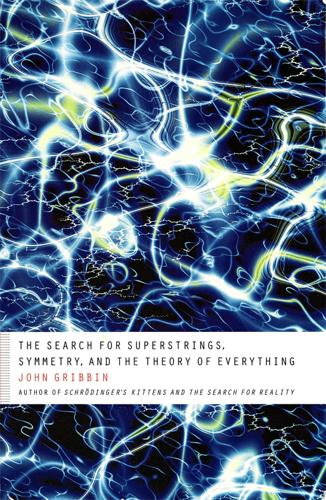
The Search for Superstrings, Symmetry, and the Theory of Everything
by
John Gribbin
Published 29 Nov 2009
Each element was known to consist of its own variety of atoms, and the 92 different kinds of atoms were regarded as the fundamental building blocks of nature—though it did seem rather profligate of nature to require so many ‘fundamental’ building blocks. Thanks to the pioneering work of the Siberian Dmitri Mendeleev, who lived from 1834 to 1907, in the second half of the nineteenth century chemists had begun to appreciate the relationships between atoms with different weights. Mendeleev showed that when the elements were listed in order of increasing atomic weight, starting with hydrogen, then elements with similar chemical properties recurred at regular intervals throughout the resulting periodic table.
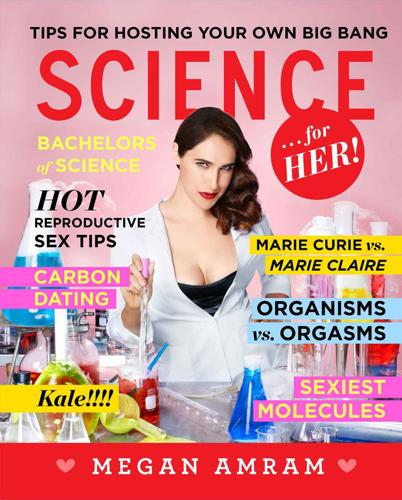
Science...For Her!
by
Megan Amram
Published 4 Nov 2014
Kim is just trying too hard, as always. Poop wore it best!! Poop 81% | Kim 19% The Periodic Table of the Elements * * * The periodic table organizes chemical elements based on their atomic numbers, electron configurations, and recurring chemical properties. Before the periodic table was organized by Dmitri Mendeleev in 1869, it was just thrown together all willy-nilly! You couldn’t find hydrogen if your life depended on it, and nitrogen was stashed under the sofa in the living room. FIG. 2.9 Everything was all over the place, like how druggies hide drugs in all the little nooks and crannies of their houses.
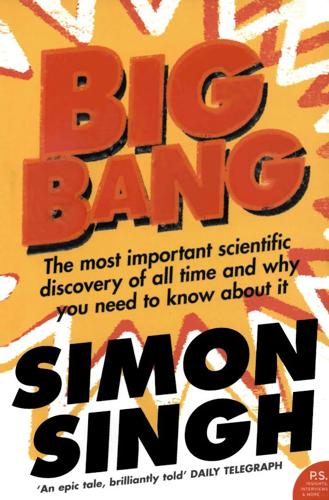
Big Bang
by
Simon Singh
Published 1 Jan 2004
In fact, a large proportion of variable stars can be explained in this way. His work was recognised by the Royal Society, which awarded him the prestigious Copley Medal for the year’s most significant discovery in science. Three years earlier it had been won by William Herschel, and in later years it would be awarded to Dmitri Mendeleev for developing the periodic table, to Einstein for his work on relativity, and to Francis Crick and James Watson for unravelling the secret of DNA. Figure 40 The variation in the brightness of the star Algol is symmetric and periodic, with a minimum brightness every 68 hours and 50 minutes.
…
In many ways, the great sacrifices made by the Curies in their cramped Parisian laboratory served only to highlight the huge lack of understanding as to what was going on inside the atom. Scientists seemed to have gone backwards in their knowledge – just a few decades earlier they had claimed to fully comprehend the building blocks of matter thanks to the periodic table. In 1869, the Russian chemist Dmitri Mendeleev had drawn up a chart that listed all the elements then known, from hydrogen to uranium. By combining the atoms of different elements in the periodic table in various ratios, it was possible to build molecules and explain every material under the Sun, inside the Sun and beyond the Sun. For example, two atoms of hydrogen plus one atom of oxygen made one molecule of water, H2O.
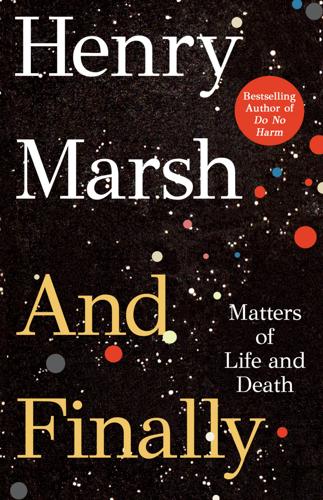
And Finally
by
Henry Marsh
The scientific literature abounds in studies of dreaming in depression, after PTSD, or in schizophrenia, and it is impossible to escape the feeling that dreams mean something, and are not just an epiphenomenon, like the ticking of a clock. There are many stories of famous revelations – Kekulé and the benzene ring, Dmitri Mendeleev and the periodic table of the elements, Paul McCartney and ‘Yesterday’ – that arose from dreams. But these revelations also came after much preceding conscious effort, and it is not clear if they arose in REM sleep or daydreaming. And all this brings us back to the metaphor problem – how are we to describe the relationship of the unconscious to the conscious?

Built: The Hidden Stories Behind Our Structures
by
Roma Agrawal
Published 8 Feb 2018
Water in large proportions made a material resistant to it, and brittle materials were ruled by fire. Ever curious and inventive, the Romans manipulated these materials to better their properties, which is how they made their renowned concrete. They may not have had the periodic table (it would be a while before Dmitri Mendeleev published the original version of the table in 1869), but they knew that the properties of a material depended on the proportions of its elements, and they could be changed by exposing it to other elements. For a long time, however, humans simply built from the materials that Nature provided, without changing their fundamental properties.

Stephen Hawking
by
Leonard Mlodinow
Published 8 Sep 2020
A decade after Stephen’s Fairchild year, I arrived at Caltech and had the office next to Murray, and down the hall from Feynman. Gell-Mann was “Murray” to me and to most people. He derived his greatest fame from discovering a mathematical scheme to classify and understand the properties of elementary particles. The achievement earned him comparisons with Dmitri Mendeleev, who accomplished an analogous feat when he invented the periodic table of elements. Feynman was “Dick” to a far smaller group. His most important contribution was to formulate a new way of conceptualizing quantum theory and of doing the calculations one needed to carry out in order to apply it—called Feynman diagrams.
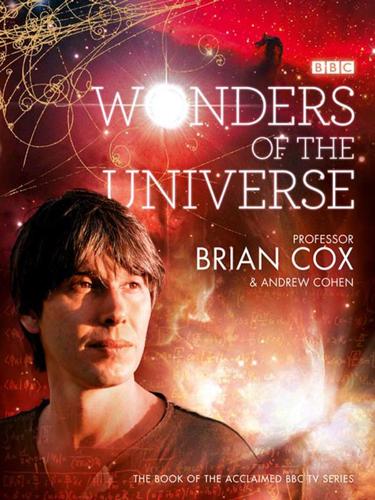
Wonders of the Universe
by
Brian Cox
and
Andrew Cohen
Published 12 Jul 2011
At its simplest, this chart is a list of the chemical elements, fundamental units of matter, which were considered to be the smallest building blocks of the world. However, this table is much more than just a list. Although elemental theories of matter were first postulated in Greece, it wasn’t until 6 March 1869 that the Russian chemist Dmitri Mendeleev finally tamed the ever-expanding list of the basic constituents of matter. Mendeleev’s genius was to arrange the list of the sixty-six then-known elements into a table according to their chemical properties. In the process, the table not only provided a neat way of grouping the elements according to their properties, but also predicted the existence of eight elements yet to be discovered.

The Knowledge Illusion
by
Steven Sloman
Published 10 Feb 2017
Some of us have a love/hate relationship with it after having had to memorize it for chemistry class. The periodic table is the heart of modern chemistry. It is a table that lists all the elements—the building blocks of nature—in a way that reveals how they are related to one another and what their properties are. Most of us are taught that Dmitri Mendeleev formulated the periodic table, but there is wide agreement that Mendeleev did not do all the necessary work alone. He built upon the work of others, like the French chemist Antoine Lavoisier. But Mendeleev is given the lion’s share of the credit. He was considered so important by other scientists that a new element was named after him, mendelevium.
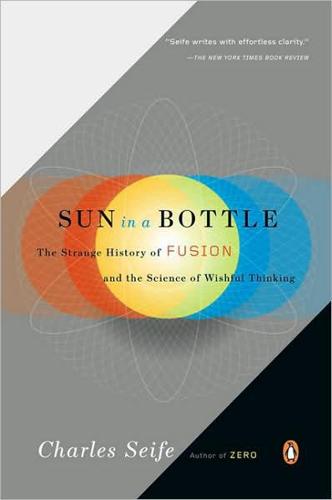
Sun in a Bottle: The Strange History of Fusion and the Science of Wishful Thinking
by
Charles Seife
Published 27 Oct 2009
More than two thousand years later, a steady march of experimentation and observation led scientists to the conclusion that Democritus was essentially correct: matter is made up of tiny atoms. Chemists had led the way; the work of chemists such as the Briton John Dalton, the Italian Amedeo Avogadro, and the Russian Dmitri Mendeleev began to produce a picture in which all matter consisted of a collection of invisible “elemental” particles. Water, for example, was made up of two particles of hydrogen and one of oxygen; alcohol had two of carbon, six of hydrogen, and one of oxygen. There was only a handful of known elements, and they each had different properties.

The Simulation Hypothesis
by
Rizwan Virk
Published 31 Mar 2019
This gave him the idea of having the thread at the tip of the needle, which was the final piece he needed to get his sewing machine to work. Chemist August Kekulé supposedly came up with the structure of the benzene molecule (which is a circular structure) after he had a dream in which a snake was eating its tail. And Dmitri Mendeleev, also a chemist, saw the elements all organize into the columns and rows we know as the Periodic Table while he was dozing in front of a fireplace at a resort on the Caspian Sea. Mystics and shamans of all traditions, on the other hand, believe that dreams are a way for us to tap into other worlds.

The Knowledge: How to Rebuild Our World From Scratch
by
Lewis Dartnell
Published 15 Apr 2014
The modern periodic table is a colossal monument to human achievement, as impressive as the Egyptian pyramids or any of the other wonders of the world. Far more than just a comprehensive list of different elements that chemists have identified over the years, it is a way of organizing knowledge that allows you to predict details about what you have not yet found. For example, when the Russian chemist Dmitri Mendeleev first assembled a periodic table in 1869 of the 60-odd elements then known, he found gaps in the brickwork—placeholders corresponding to missing substances. But the brilliant thing about the arrangement, where the elements are placed according to their properties, is that it enabled him to predict precisely what these hypothetical elements would be like—such as eka-aluminum, the missing piece in the table immediately below aluminum.

Calling Bullshit: The Art of Scepticism in a Data-Driven World
by
Jevin D. West
and
Carl T. Bergstrom
Published 3 Aug 2020
Glass slippers take one type of data and shoehorn it into a visual form designed to display another. In doing so, they trade on the authority of good visualizations to appear authoritative themselves. They are to data visualization what mathiness is to mathematical equations. The chemist Dmitri Mendeleev developed the periodic table in the second half of the nineteenth century. His efforts were a triumph of data visualization as a tool for organizing patterns and generating predictions in science. The periodic table is an arrangement of the chemical elements from lightest to heaviest. The left-to-right positions reflect what we now understand to be the fundamental atomic structure of each element, and predict the chemical interactions of those elements.

QI: The Book of General Ignorance - The Noticeably Stouter Edition
by
Lloyd, John
and
Mitchinson, John
Published 7 Oct 2010
As these liquids are very dense (being metals), bricks, horseshoes and cannon balls theoretically float in them. Gallium (Ga) was discovered by French chemist Lecoq de Boisbaudran in 1875. Everyone assumed it was a patriotic name but gallus is Latin for ‘a Gaul’ and ‘rooster’ – as in ‘Lecoq’. It was the first new element to confirm Dmitri Mendeleev’s prediction of the periodic table. Gallium is used chiefly in microchips because of its strange electronic properties. Compact disc players also make use of it because when mixed with arsenic it transforms an electric current directly into laser light, which is used to ‘read’ the data from the discs.

The Golden Thread: How Fabric Changed History
by
Kassia St Clair
Published 3 Oct 2018
Even more tantalisingly, from a commercial point of view, short lengths of viscose fibre, known as ‘staples’, can be mixed with other fibres, such as cotton or wool, before being woven. This has led to the creation of new fabrics to market to consumers, who have also benefitted from lower prices.7 For western scientists and businessmen, the prospect of finally being able to shake the East’s dominance over luxury fabric production was wildly exciting. Dmitri Mendeleev, the Russian chemist who set out the periodic table, warned that because the production of rayon was still ‘in its first, or embryonic stage of development . . . it is best to talk about it with caution’. Notwithstanding such reticence, he continued that ‘the victory of viscose will be a new triumph of science . . .
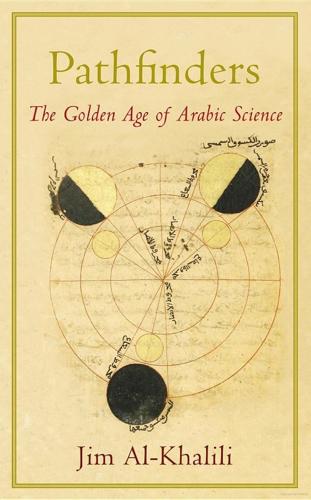
Pathfinders: The Golden Age of Arabic Science
by
Jim Al-Khalili
Published 28 Sep 2010
The techniques that were developed drove a thriving and successful industry, but we also see in the work of Jābir the beginning of chemistry as an empirical science motivated by a desire to understand how the world is made up. The periodic table one finds on the wall of every school science laboratory was conceived by the Russian chemist Dmitri Mendeleev in 1869. Its key idea is to group together substances with similar properties, as well as arranging them according to their atomic weight. On one side, for instance, are the inert gases and, on the other, the volatile metals. It is a triumph of classification, giving scientists a way of organizing their knowledge of the material world, something mankind has been striving to do since the dawn of time.

The Music of the Primes
by
Marcus Du Sautoy
Published 26 Apr 2004
Whilst the Greeks mistakenly believed fire, air, water and earth to be the building blocks of matter, they were spot on when it came to identifying the atoms of arithmetic. For many centuries, chemists strove to identify the basic constituents of their subject, and the Greeks’ intuition finally culminated in Dmitri Mendeleev’s Periodic Table, a complete description of the elements of chemistry. In contrast to the Greeks’ head start in identifying the building blocks of arithmetic, mathematicians are still floundering in their attempts to understand their own table of prime numbers. The librarian of the great ancient Greek research institute in Alexandria was the first person we know of to have produced tables of primes.
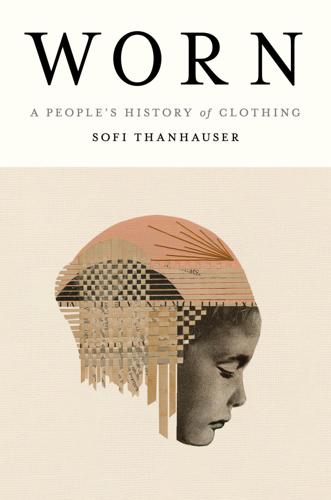
Worn: A People's History of Clothing
by
Sofi Thanhauser
Published 25 Jan 2022
—Fred E. Beal Rayon, also known as viscose, is a fabric made from trees. Wood is pulped, then liquefied, then extruded into thin filaments that can be woven into a fabric that imitates silk. Rayon opened the miraculous possibility of mass-producing fiber in countries that grew no cotton. As Dmitri Mendeleev wrote in 1900, “Russia with its heartland of forests and grasses could, with the production of viscose, provide the entire world with a colossal amount of fiber.” In the early twentieth century, rayon was essentially a start-up industry based in small manufacturing units, many carried out on a prototype scale.

The War Below: Lithium, Copper, and the Global Battle to Power Our Lives
by
Ernest Scheyder
Published 30 Jan 2024
Soon, laptops, cell phones, and a range of other consumer electronics were everywhere, powered by the rechargeable batteries built with metals that can be reused thousands of times.13 Even still, most of the world’s consumers paid little attention to how much the Periodic Table of Elements affected their daily lives and, increasingly, their futures. While the United Nations declared 2019 the International Year of the Periodic Table of Chemical Elements to honor the 150th anniversary of Dmitri Mendeleev’s creation of the iconic chart, the average shopper in a department store would struggle to identify which of its constituent members go into a computer battery, or an automobile, or a solar panel. Just over a quarter of Americans told a 2019 survey they had never heard of rare earths elements, the crucial materials used to build magnets that power electric vehicles.14 When Martin Eberhard founded Tesla Motors in 2003, the lithium-ion battery was very much fringe in the automobile sector, treated as a kind of science experiment by Ford, Chrysler, and other auto giants.

The Greatest Show on Earth: The Evidence for Evolution
by
Richard Dawkins
Published 21 Sep 2009
Fred Hoyle has ingeniously speculated that, if we had been born with eight digits and therefore become accustomed to octal arithmetic instead of decimal, we might have invented binary arithmetic and hence electronic computers a century earlier than we did (since 8 is a power of 2). * Alas, the popular legend that it came to Dmitri Mendeleev in a dream may be false. CHAPTER 5 BEFORE OUR VERY EYES I HAVE used the metaphor of a detective, coming on the scene of a crime after it is all over and reconstructing from the surviving clues what must have happened. But perhaps I was too ready to concede the impossibility of viewing evolution as an eye witness.

Energy: A Human History
by
Richard Rhodes
Published 28 May 2018
For example, he said, “the more carbon atoms we get into the compounds, the heavier the fuel becomes.”43 That practical perspective now informed the Midgley group’s pursuit of an antiknock compound. One of their consultants, an MIT chemist named Robert E. Wilson, showed Midgley a periodic table he had constructed on a different principle of organization from Dmitri Mendeleev’s original principle of chemical similarities. Wilson’s table highlighted regularities important to organic chemists.II “Tom was greatly interested in this,” Wilson recalled, “especially since he believed that the antiknock properties of various agents were primarily properties of the elements, and he had some indications that the antiknock effect of an element varied predictably with its location in the periodic system.”44 Midgley’s trail of increasingly heavy stinkers suppressing knock with increasing effectiveness was the crucial clue.
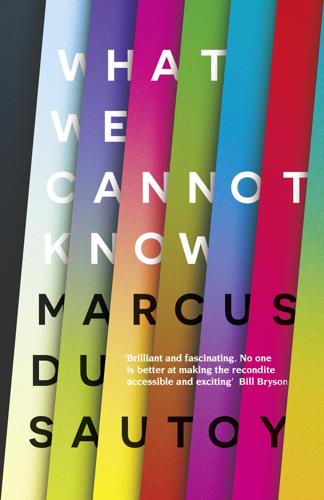
What We Cannot Know: Explorations at the Edge of Knowledge
by
Marcus Du Sautoy
Published 18 May 2016
It seemed that all compounds came in proportions that were whole-number ratios. For example, aluminium sulphide was given algebraically as 2Al + 3S = Al2S3, elements combining in a 2-to-3 ratio. Elements never combined in a non-whole-number relationship. It was like musical harmony at the heart of the chemical world. The music of tiny spheres. The Russian scientist Dmitri Mendeleev is remembered for laying out this growing list of molecular ingredients in such a way that a pattern began to emerge, a pattern based on whole numbers and counting. It seemed that the Pythagorean belief in the power of number was making a comeback. Like several scientists before him, Mendeleev arranged them in increasing relative weight, but he realized that to get the patterns he could see emerging he needed to be flexible.

A Pipeline Runs Through It: The Story of Oil From Ancient Times to the First World War
by
Keith Fisher
Published 3 Aug 2022
The spot where the gas rose from the ground had been enclosed by a wall, and a small temple built in the midst … After the murder of the Abbot one of the surviving priests fled, but the third remained to tend the fire, which was merely a pipe in the ground connecting with the naturally rising gas.82 Throughout the 1860s voices were raised by the business community protesting that Baku’s oil industry was being stifled by the state’s four-year monopoly contract system for crude production. In 1872, following a report by Russian chemist Dmitri Mendeleev, the government decided to introduce long-term leasing and American-style competition. At the end of that year the oil-bearing properties were sold off by sealed bids to the highest bidder, in small plots to encourage competition between many small capitalists. However, the Armenian production monopolist Mirzoyev and the Kokorev and Gubonin partners – now with a 7.5 million rouble joint-stock company, the Baku Oil Co. – had the capital to dominate the auction, outbidding others for the most prized leases on the Balakhani oilfield, where Mirzoyev had just sunk Baku’s first commercially successful mechanically drilled well.83 On the Apsheron Peninsula was now replayed the familiar script of the Pennsylvanian oil rushes, as producers competed to maximize output from their plots.